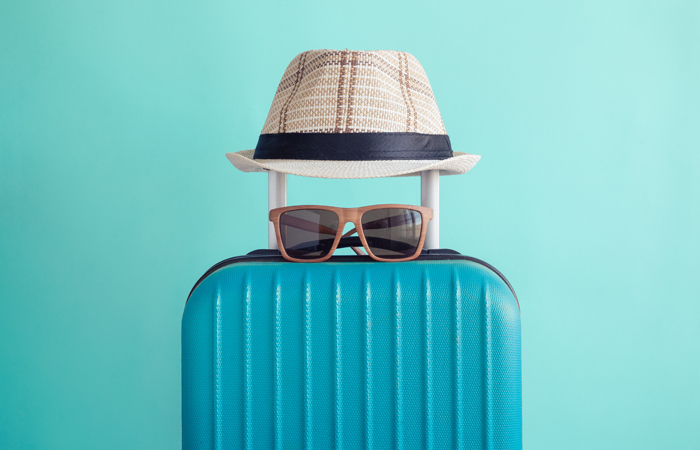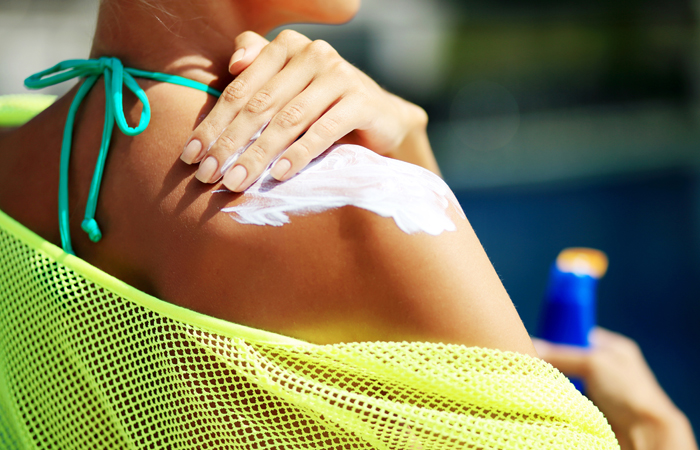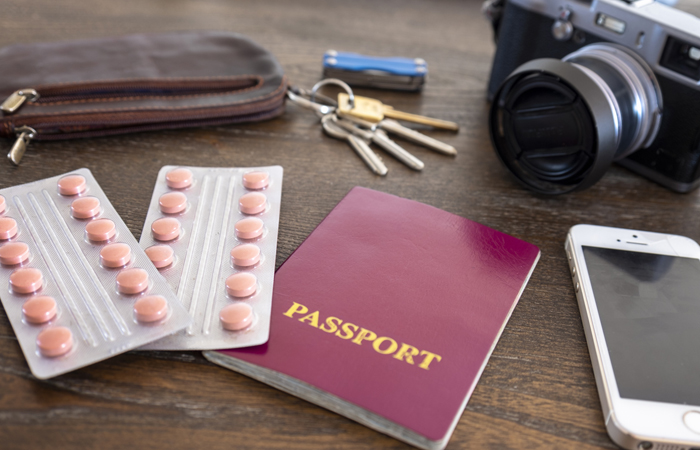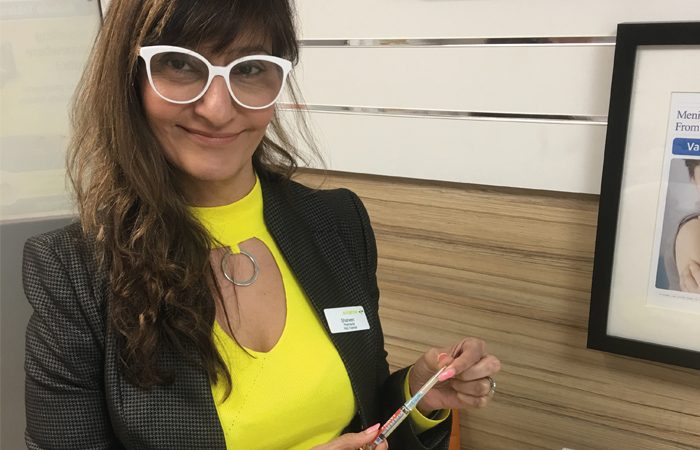Travellers' checks
In OTC
Follow this topic
Bookmark
Record learning outcomes
Staying healthy on holiday can be the difference between wonderful memories or a trip worth forgetting. Whether pharmacy teams run a travel clinic or not, they are ideally placed to help customers plan and prepare for a healthy holiday
Holidays. We research them, save money for them and look forward to them, and for many of people the prospect of a summer break keeps them going during the long winter months. So the last thing customers need is to be struck down by illness or suffer from sunburn instead of relaxing, having fun and enjoying their holiday.

While it’s difficult to prevent some health problems while away from home, thinking ahead and being prepared for common travel-related ailments is essential. Pharmacy teams are ideally placed to advise travellers on what to pack in a travel health kit, as well as providing tips on reducing their risk of common health complaints and how to manage these if they do succumb to them.
Travel sickness
Most common in children, travel sickness is caused by repeated movements during travel which confuse the balance sensors in the brain. Common symptoms include feeling or being sick, sweating, increased saliva, headache and feeling cold.
What can help?
Advise customers to try the following:
- Avoid heavy meals before travel
- Take breaks during long journeys, if possible
- Sit in the front of a car, over the wing of a plane or in the middle of a boat – ideally on deck
- Avoid reading as this can exacerbate symptoms
- Fix eyes on the horizon, not moving objects.
Treatments
- Acupressure bands worn on the wrists may be helpful
- Hyoscine is an effective preventive remedy for travel sickness and is available over the counter. It should be taken 30-60 minutes before travel. It’s also available in a patch form on prescription
- Antihistamines are also an option.
Any long journey over four hours on a plane, train, car or bus can increase risk of DVT
Stay sun safe

Melanoma is the fifth most common cancer in the UK, with around 15,900 cases a year, according to Cancer Research UK. The good news is that according to a recent British Skin Foundation (BSF) survey into sun cream usage, of those who use sun cream, three in five used SPF30 or higher, while seven in 10 parents use SPF30+.
There is however a long way to go to educate customers about sun safety, as one in three people still get sunburnt every year, with 28 per cent getting burnt three or more times.
This year’s Sun Awareness Week takes place from 6-12 May and is a great opportunity to talk about sun protection with customers. Karis Betts, Cancer Research UK health information manager, says: “The most important message for you to get across to your customers is for them to keep covered up with clothing, hats and sunglasses and to spend time in the shade or indoors during the hottest part of the day. Sunscreen should be the last line of defence, never the first. Reapply sunscreen on exposed skin frequently and always use more than you think you need.”
Sun cream should be applied generously, with about six teaspoons needed to cover an adult’s body. It should be applied 20-30 minutes before going into the sun and moisturiser should be applied first, if using one, followed by sun cream, insect repellent and then any makeup.
Mistakes customers are likely to make include only applying sun cream once a day, missing areas of skin and thinking they can spend longer in the sun when they’ve applied sun cream, says Karis, who adds that a sun cream with a minimum of SPF15 and with a four or five UVA star rating should be used on each application.
When it comes to babies and small children, Dr Anjali Mahto, consultant dermatologist and BSF spokesperson says they should never be left in direct sunlight. “It’s essential to use a high SPF, such as SPF50, combined with hats and clothing to protect their delicate skin,” she says. “Educate children about the importance of sun protection from an early age to get them into the habit of looking after their skin. Data suggests five or more sunburns in youth can increase lifetime melanoma risk by up to 80 per cent.”
Malaria
This is a parasitic infection caused by the bite of female mosquitoes. Symptoms include fever, chills, sweating, muscle pain, headache and vomiting. Infection can be severe and fatal if not treated quickly.
How can it be prevented?
The preventative A, B, C, D approach should be recommended to customers:
- Awareness of risk. Find out if there is a risk of malaria before travelling, using country specific information
- Bite prevention. Wear loose, long-sleeved tops and trousers. Use a repellent on any exposed skin. Spray insecticide in bedrooms and on clothing. In an unscreened room, use a mosquito net impregnated with insecticide
- Chemoprophylaxis. Find out if customers need antimalarial tablets for their destination. They should discuss the best type to use with the pharmacist or their GP
- Diagnosis and prompt treatment. It’s important for customers to seek urgent help if they notice any symptoms. These can appear six days after exposure or up to 30 days after leaving a malarial area.
Travellers’ diarrhoea
This is one of the most common holiday illnesses and most cases occur during the first week of travel. As well as loose and watery bowel motions, customers may experience fever, cramps, nausea or vomiting.
Travellers’ diarrhoea can be caused by bacteria, such as E. coli or salmonella; parasites; or viruses, such as norovirus. These can all be spread by eating or drinking contaminated food and water, or contact with contaminated cutlery and crockery. If it’s just loose bowel movements without other symptoms, it can be caused by a change in diet.
What can help?
Advise customers ensure they do following:
- Wash hands thoroughly before eating or handling food. A hand sanitiser gel can be recommended in case washing facilities are not available
- Avoid uncooked meat, shellfish, eggs, salads and peeled fruit
- Avoid tap water and ice cubes
- Are careful when choosing places to swim and try to avoid swallowing water.
Treatments
In most cases, diarrhoea will clear up without specific treatment. The most important thing is to avoid dehydration, especially in children. Advise drinking around 200ml fluid after each bout of diarrhoea.
- Oral rehydration solutions are helpful for adults and children as they replace lost fluid and salts. Travellers should be advised to take sachets with them as they’re not always readily available abroad
- Anti-diarrhoeal medicines such as loperamide are useful to take while travelling, but otherwise aren’t recommended
- Bismuth subsalicylate is an alternative to loperamide and can be taken for up to two days
- Pre- and probiotics may help treat and/or prevent diarrhoea.
Advise customers to seek help if: there is blood or mucus on stools; they are having six or more bouts of diarrhoea in 24 hours; they are vomiting, in pain or have a fever. In some cases, antibiotics and/or intravenous fluids may be needed to prevent dehydration.
Sunscreen should be the last line of defence, never the first
Insect bites and stings
The insects customers are likely to come across will depend on the country they are visiting. Diseases transmitted by insects are most common in tropical and subtropical countries. For specific information visit: Fit For Travel NHS.
Insect bites can cause itching, discomfort and skin can become infected through scratching.
What can help?
With insect bites, prevention is key. The best way to avoid getting bitten by mosquitoes is to cover up exposed skin with loose clothing, use insecticide mosquito nets for sleeping in and apply an insect repellent containing DEET, picaridin or p-Menthane-3,8-diol (PMD) on any exposed skin.
Treatments
- Wash area with soap and water, alcohol gel or antiseptic
- Use a cold compress to reduce swelling
- If a sting is visible, it can be gently removed by scraping away with a fingernail or edge of a credit card
- Oral antihistamine or topical corticosteroid cream or spray will reduce itching
- If swelling worsens or there are any breathing difficulty, seek help.
Taking medicines abroad

All travellers should check if there are any restrictions on the medicines they plan to take with them, including OTC medicines. Some countries have extensive lists of medicines that are not allowed. Customers can check with individual country embassies.
In addition, customers should be advised to:
- Make sure they have enough medication for the duration of their trip, with a little extra to allow for delays, damage or loss
- Keep all medicines in the original packaging with the labels on
- Use a cool pack or insulated pouch for medicines that need to be kept cool
- Always carry medicines in hand luggage as checked-in luggage may get lost in transit
- Take a letter from their GP for any prescription medicines in case of problems
- Take a letter from their GP for any liquid medication needed during travel that exceed the 100ml restriction, and seek approval for these from the airline before travel.
Deep vein thrombosis
Any long journey over four hours on a plane, train, car or bus can increase risk of deep vein thrombosis (DVT). Blood flows more slowly and pools in the legs when sitting for long periods, increasing the risk of a blood clot.
Those at increased risk of DVT after a long journey include: anyone having an operation in the last two months, pregnant women, those with a history of DVT or pulmonary embolism, women taking the contraceptive pill or hormone replacement therapy, people who are overweight and anyone with a blood clotting disorder.
What can help?
Advise customers to try the following:
- Exercise calf and foot muscles regularly during the journey
- Walk up and down the aisle, if possible
- Keep a clear space in front so legs can be stretched out
- Compression hosiery for at-risk customers.
Heat stroke and heat exhaustion
Symptoms of heat exhaustion include a temperature of 38°C or above, feeling faint and/or dizzy, headache, tiredness, sweating, urinating less, nausea and vomiting. It is not usually serious if the person cools down within 30 minutes.
Heat stroke may occur if heat exhaustion is not treated properly. Signs include headache; feeling restless and confused; hot flushed and dry skin; fast pulse; a temperature of over 40°C and dizziness.
What can help?
Remind customers that getting acclimatised to hot weather takes around 10 days. During that time they should limit physical exertion and keep well hydrated. Carrying a small fan helps cool the body when unable escape the heat. Customers should be advised to avoid being outside between 11am and 3pm, where possible.
Treatment
Anyone affected by heat exhaustion should lie down in a cool place with their legs raised. They need plenty of water to drink, but also a rehydration solution to replace salts lost through sweating. Spraying their face and body with water and using a fan can help the body cool down quicker.
Heat stroke is a medical emergency and help should be called for immediately. While waiting, advice is to remove outer clothing, wrap in a cold wet sheet or sponge with cool water and use a fan. This should be continued until their temperature falls to below 38°C. If they lose consciousness, they should be put in the recovery position.
My travel health clinic

Pharmacist Shaheen Bhatia set up a travel clinic at P&S Chemist in Ilford, London, after requests from locals. Eight years on, she explains how its gone from strength to strength.
“I was being asked if I could provide the meningitis ACWY vaccine for customers who were travelling to Mecca, as they found it difficult to get a GP appointment and also the doctors were charging high prices for these vaccines. I looked into it and got myself trained. I was lucky that the demand for the travel service was already there.
“It’s been so popular right from the outset. Once I started giving the meningitis ACWY vaccine, customers soon asked if I could provide other travel vaccines, so
I got trained to administer these too. Our popularity has spread through word of mouth, but we’ve also been very proactive with our advertising. We have in store leaflets for customers who want to find out more about what we offer. We also get referrals from local GPs too, who are very supportive of our service.
“We have a lot of ethnic minorities in our area – from India, Pakistan and Africa – and they travel home to visit family so they welcome our advice on how to protect children when they are abroad. But we also get backpackers asking for advice on anti-malarials, about diarrhoea prevention or sun protection. They like the fact that we’re a one-stop travel shop and they can get both the advice and all the remedies they need in one place. Our most popular travel vaccines are hepatitis A and typhoid, tetanus and menACWY.
“The travel clinic has boosted our income, but it’s also given us a more clinical image. Lots [of customers] have commented ‘I never realised that pharmacists could do things like vaccinations.’ Our customers often comment that they really appreciate the time we take going through everything with them, especially regarding taking their medication abroad.”
